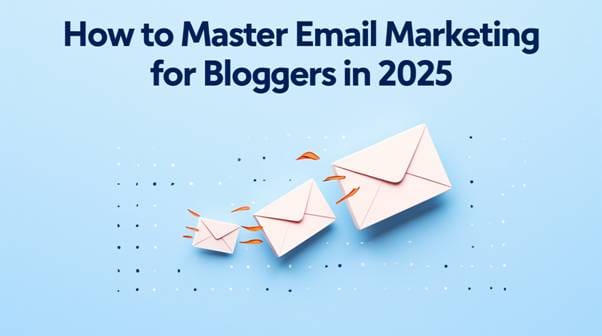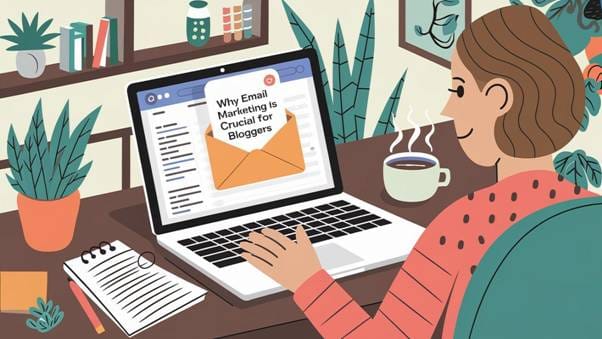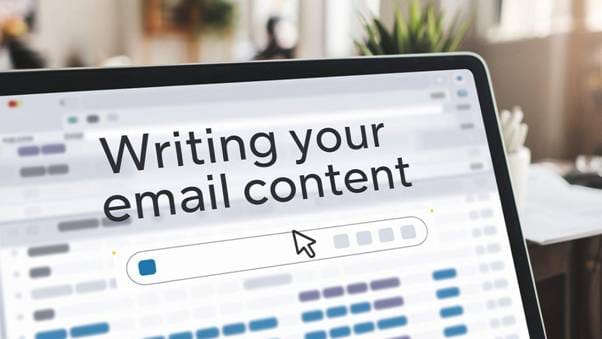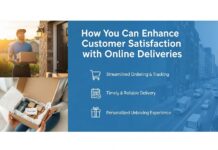
Whether you’re a beginner or a veteran blogger, it’s never too early — or too late — to take email marketing seriously. Email is personal and direct, and it’s the one channel that you have total control over. Done right, it can grow your traffic, engagement, and revenue more than you ever thought possible.
In this guide, I’ll describe the benefits of email marketing for bloggers, provide you with the key steps to develop your strategy and help you select the right tools. By the end of your reading, you’ll have a clear plan on how to turn your blog into a “successful business with a loyal following” from “yet another website”.
1. Why Email Marketing is Crucial for Bloggers
Get real: social media is noisy, and algorithms change faster than the seasons. Search engine rankings can go up and down with every update. But your email list? That you can own and command, regardless of whimsical changes.

Email gives you a direct hotline to your audience. When someone opts into your list, they’re essentially giving you permission to visit their inbox at your convenience. That’s important because if they value your content enough to share their email address, they’ll also be willing to take your advice, buy your products, and recommend your blog to others.
In addition to that, email is reliable. No matter how many new platforms emerge, people still use email on a daily basis — often more than once a day. In fact, research shows that email marketing can yield one of the greatest returns on investment in the digital marketing landscape.
2. Building Your Mailing List
Step one is to get people to sign up for your list. Your email list is made up of readers who’ve actively subscribed to be kept up-to-date on your content. Think of it as VIP access: they get a front-row seat to every new post, product launch, or exclusive announcement you send out.
One proven technique is to offer a bribe or freebie, sometimes called a “lead magnet.” It could be a short eBook, a quick cheat sheet, or a handy template that solves a problem your readers face. For example, if you blog on finance, you could create a budget spreadsheet. If you blog on food, an easy-to-use meal planner could do the trick.
Make sure to place your sign-up forms in visible areas around your website. Sidebar widgets, pop-ups, or an in-post form at the end of each article are a good place to start. Make it simple, only request the essentials (usually a name and email address), and be clear about what subscribers can expect.
3. Writing Your Email Content
Now that you have subscribers, you need to keep them engaged. When one of your emails is opened by a subscriber, it should sound like a letter from a friend and not a corporate sales pitch.

In general, most of your emails should be value-sharing. Send notifications of your latest blog posts, behind-the-scenes glimpses, or exclusive tips that you have not shared elsewhere. Occasionally you can include a promotional email if you have something like a new course, product, or partnership that you want to talk about.
Treat the subject line like a blog post title: if it’s not interesting, nobody’s going to open it. Be honest, direct, and personal. Preview your emails on desktop and mobile, as most people will probably be reading on their phones.
4. Choosing the Right Email Service Provider
Your email service provider (ESP) is the program you’ll use to collect emails, manage subscriber lists, and send campaigns in bulk. Selecting the right ESP will save you a lot of grief further down the road, so don’t rush it.
A few of the popular ones include ConvertKit Beehiiv, AWeber, and Mailchimp, which offer user-friendly interfaces and automation. If you’re looking for an even simpler solution, you may wish to explore Selzy or GetResponse. These tools help with list segmentation, automated drip campaigns, and email analytics so that you can monitor open rates, click-throughs, and more.
ESPs like those mentioned above provide everything from the basics to premium features such as email tracking and easy integration with other marketing tools. Consider how much you’ll automate, how big your list might get, and what you can afford each month before you choose.
5. Monetizing Your Email List
Alright, let’s talk money. If you’re blogging full-time or hope to be, email marketing can generate income in a significant way. The key is to do it in a real way that resonates with your readers.

You can sell your own products, like an eBook or course. If you’re just getting started, begin with smaller products — like a paid PDF guide. As your list grows, you can create a wider product line or offer larger services. Some bloggers also choose to partner with brands they adore, selling affiliate products that relate to their content.
For example, if you run a travel blog, you can publish a promotion on travel gear or cheap flights. Be honest and transparent at all times, however. If you don’t believe in or use a product, don’t promote it. Nobody likes a sellout, and a loss of trust can ruin your brand in a night.
6. Greater Interest in Automation
Automation may seem fancy, but it’s really just about sending the right email to the right people at the right time — without actually having to do that manually every single day. With automation, you can welcome new subscribers, thank them after they make a purchase, or remind them about the items they left in their shopping cart if you have an online store.
A simple “welcome sequence” might be three to five emails informing them who you are, what your blog does, and what they can expect from you. You might send a short personal story in email number one, for instance, then send that freebie you promised in email number two, and wrap it up with a bonus tip or discount in email number three.
If you are using ConvertKit, AWeber, or Mailchimp, it is typically simple to create these automated sequences. You can set the timing, create triggers (like when someone subscribes or clicks on a specific link), and let the system do the work while you focus on creating great content.
7. Keeping Your List Healthy and Spam-Free
Once you dive into email marketing, it’s easy to fall into the trap of building your list as fast as possible. But quantity doesn’t matter without quality. A smaller list of very engaged individuals can work better than a big list of uninterested subscribers who never open your emails.

Keep your subscribers interested by cleaning your list from time to time. Most ESPs offer tools for identifying inactive subscribers, and you can try to re-engage them with a simple “We Miss You” promotion or email. If they fail to respond, remove them in order to boost your open rates and deliverability.
And as for spam: simply follow the law. Never buy email lists, and have the consent of each subscriber. Include an unsubscribe link in each message and follow laws like the CAN-SPAM Act or GDPR if you’re sending in Europe. Failure to do so will hurt your sender’s reputation and land your messages in spam folders.
8. Testing, Analytics, and Improvement
Data is your friend. Any good ESP gives you open rates, click-through rates, and unsubscribes. Those numbers let you know what you’re doing right and what you’re doing wrong.
When you send a campaign with a witty subject line and see a spike in your open rate, you can repeat the same next time. When no one clicks on your link, you might require a stronger call to action or some copy that is more engaging. Experiment with subject lines, split your list, or mix up your send time to discover what works.
Testing is simply splitting your list down the middle. So maybe Group A would receive the subject line “My Top 5 Tips for Saving Time”, and Group B would receive “5 Time-Saving Hacks You Need Today.” Determine which one performs better and continue with that approach in future mailings.
The Final Word: Leveling Up Your Blogger Experience
Email marketing isn’t another box to tick; it’s the glue that makes your blog stick together. With email, you get to build meaningful, personal connections with your audience, get steady traffic, and monetize doing what you love. It’s a complete game-changer if you treat it with respect and authenticity.
While you build your list, don’t lose sight of the prize of providing true value. Promote tastefully, monitor your numbers, and experiment regularly. This isn’t one-and-done; it’s a conversation with your subscribers. The more you show up for them, the more they’ll show up for you.
Now it’s time to bring it to the next level. Grab your favorite ESP, set up that welcome series, and offer something your readers won’t be able to resist. You’ll soon enough be surprised how powerful email marketing will be in helping you build a successful blog with devoted readers. And who knows? Subscribers today could very well be your best customer, partner, or blogging friend tomorrow.
About the author:
Nicole Genchur is a digital marketing enthusiast who helps small businesses refine their email outreach. She believes in blending storytelling with analytics to maximize open rates and conversions.





